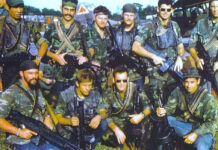

“A good plan never survives contact with the enemy…”
“Proper Prior Planning Prevents Piss Poor Performance.”
“A good plan, violently executed now, is better than a perfect plan next week.”
There are a myriad of one liner wonder quotes that are supposed to encompass how important (and how unimportant) planning is when it comes to violent interactions.
The long and short of it is that planning is vitally important but your plan must be flexible enough to work with the variables you are presented in the unique circumstances of the fight.
Every fight will have elements that are the same. You can plan around these elements.
- The fight will have a primary threat.
- The fight will have environmental obstacles, these can help or hinder you
- The fight will be fluid, it can and will move up and down the force scale and distances will vary.
But the things you won’t know until the threat is present will be extensive
- Indoors?
- Outdoors?
- Home?
- Car? Inside or Outside? Driver or Passenger?
- Store? Gas Station? Front? Back?
- Daytime?
- Nighttime? Lit? Unlit?
- One threat?
- Multiple threats?
- Threat motivation?
- Bystanders?
- Protecting yourself?
- Protecting more than yourself?
- Available cover or concealment?
- Approaches and escape routes?
- Available weapons?
- Injuries?
It’s an extensive list but you can plan around these just as effectively so that you can react appropriately to both the threat and the environment. Making continuous observations about your physical and social environment will answer a lot of these questions for you.
Your greatest tool for developing practice techniques and solidifying your plans is visualization. Visualize the fight changing each of the variables above and brainstorm how you would finish the fight. Then envelope the necessary practices into your daily, weekly, and continuing self defense routines and education.
A bad plan is one that only works with certain fixed variables. Your plan to take on bad guys kicking down your front door in the middle of the afternoon while you’re watching TV does you no good asleep at 2:00 a.m. as they come in a window and vice versa.
A good plan quickly reacts off of available information. In the same home invasion scenario, regardless of time or entry point, if you’ve thought your reaction through with a multitude of variables your actions will be more consistently productive. Especially if they are practiced actions. Instead of either fitting or not fitting your pre-planned scenario the defense response becomes a series of QAA’s (Question-Answer-Action)
- Someone is entering the house
- Where are they?
- Where am I? Are there others involved?
- Can I deal with this here (armed, position of advantage) or do I need to move (unarmed, no cover, etc.)?
- Method of engagement, Escalation of Force
- QAA
- QAA
- OODA Loop again and again and again until the threat is eliminated, controlled, or removed.
- QAA
- QAA
- Method of engagement, Escalation of Force
- Can I deal with this here (armed, position of advantage) or do I need to move (unarmed, no cover, etc.)?
- Where am I? Are there others involved?
- Where are they?
Rapidly taking in the information and deciding what you need and having the knowledge and skills to make those decisions effective, that is good planning. You should never run into a question you cannot generate a workable answer for.
Find courses to hone skills you are weaker on and always be working to make your preparations better than they were yesterday. Invest in your survival.



